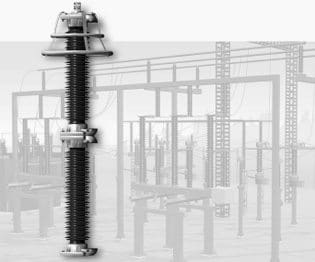 Generally speaking, capacitor protection by surge arresters has been a difficult task before ZnO arresters became available. The high discharge currents and possible energies associated with an arrester operation at a capacitor bank heavily stressed the spark gaps in a SiC gapped arrester. The possible high energies could also result in overstressed SiC blocks. Once a sparkover occurred, the arrester which sparked-over had to discharge the whole energy stored in the capacitor and also carry a power-frequency follow current before a resealing at the next voltage zero was possible.
Generally speaking, capacitor protection by surge arresters has been a difficult task before ZnO arresters became available. The high discharge currents and possible energies associated with an arrester operation at a capacitor bank heavily stressed the spark gaps in a SiC gapped arrester. The possible high energies could also result in overstressed SiC blocks. Once a sparkover occurred, the arrester which sparked-over had to discharge the whole energy stored in the capacitor and also carry a power-frequency follow current before a resealing at the next voltage zero was possible.
Paralleling of gapped arresters required complicated triggering systems and thus it was difficult to design arresters to meet very high energy requirements at low voltage levels.
In practice, the gapped arresters in many cases served as ”fuses”. With the introduction of ZnO surge arresters, it is possible to meet any energy demand by simply paralleling the necessary number of blocks even if the procedure to ensure current sharing is quite sophisticated.
Switching surges of different origins can occur but, in general, it is the restrike cases that result in the highest arrester duties. Even if it is desirable to select a breaker which minimizes the risk for restrikes, it is recommended to base the arrester energy rating on a restrike due to the reasons discussed above.
Using surge arresters
Many capacitor banks are operated without surge arresters. However, there are a variety of reasons to instal arresters:
- To prevent capacitor failures at a breaker restrike or failure.
- To limit the risk of repeated breaker restrikes.
- To prolong the service life of the capacitors by limiting high overvoltages.
- To serve as an ”insurance” against unforeseen resonance conditions which otherwise would lead to capacitor failures.
- For overall limitation of transients related to capacitor bank switching which can be transferred further in the system and cause disturbances in sensitive equipment.
- For upgrading of capacitors by preventing high overvoltages and/or for increasing the service voltage.
- To serve as protection against lightning for capacitor banks connected to lines.










